
According to a study by the Eastern Virginia Medical School, approximately two-thirds of the American population reported having a mystical experience they could not easily explain. Over in Iceland, 55% of people surveyed in 1970 believed that Elves definitely existed or there was at least a strong possibility. It is also worth noting that most people have a narrow definition of ‘fairies,' an issue we are about to tackle.
This is not an easy question to answer because there is no hard and fast definition. It varies according to culture with numerous nations having their unique tales. Let’s take a look at just some of the definitions.
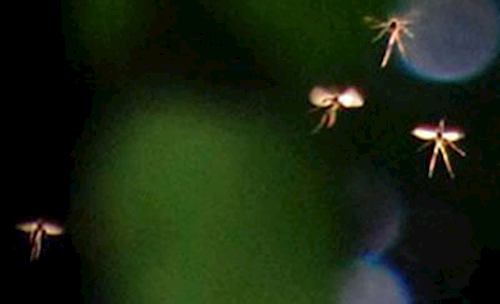
Manchester University Professor John Hyatt took this photo in the Rossendale Valley, Lancashire.
At the beginning of the 18th century, famed anthropologist, W.Y. Evans-Wentz, visited Ireland, the Scottish Highlands, Brittany, Wales, Cornwall, and the Isle of Man to gather stories regarding fairies from the locals he met. He learned that the people of these regions believed there was a strong connection between fairies (also known as Fair Folk) and the dead.
In Ireland, the belief was that fairies were the spirits of the dead who returned to provide warnings and wisdom. In Wales, fairies were known as the Tylwyth Teg, and unlike the stereotypical view of fairies, Welsh natives believed these ‘ancestor’ spirits were over 6 feet tall.
Over in Cornwall, fairies are people who were deemed not good enough for heaven but not bad enough for hell. They are shapeshifters, but they become smaller with every transformation.
Another assertion is that fairies are from the ‘lower end’ of the angelic ranks and they have come to watch over us. In Gaelic speaking regions of Scotland, the belief is that fairies are ‘fallen angels’ as written by Alexander Carmichael in Carmina Gadelica.
Another old Irish belief is that fairies were the children of the goddess Don. The Tuatha de Danann, as they were known, had incredible powers. After suffering conquest at the hands of the Milesians, they hid in the hills to become the Daoine Sidh. Over the course of a few centuries, they mated with Fianna Finn warriors, but these children became smaller and eventually, they were smaller than babies when fully grown.
There are a multitude of other beliefs but suffice to say; the notion that fairies are tiny winged creatures is mainly something that came into being around the Victorian age. In ancient times, fairies were often adult size, and the Irish Sidh were said to be up to 14 feet tall.
While the number of people that still believe in fairies has dwindled markedly in the modern era, a significant number of individuals not only believe in these beings, they claim to have seen them; and we focus on these stories later on.
You may be surprised to learn that at the beginning of the 20th century, large swathes of rural Ireland and Britain had a steadfast belief in the existence of fairies. The term ‘fairy’ comes from the word ‘fay,' which in turn derives from the old French word ‘feie.' This word came from the Latin word for Fates ‘fata’. The Fates were supernatural beings that played a major role in the fortunes of humans.
There is some confusion over the origin of stories involving fairies. Given the propensity of the Ancient Celts to worship nature, plus the fact that fairies are often associated with the elements, there was an insistent sentiment that fairies were worshipped as deities in pre-Christian times. It was a common belief in the Victorian era that modern anthropologists have debunked.
What we do know is that the likes of Geoffrey Chaucer and his contemporaries wrote about ‘faeries’ in the 14th century. According to writers of the age, these beings were capable of enchantment and illusion. It was commonly understood that fairies either lived underground or in prehistoric cairns, forts and earth mounds. As a result, sites such as Fairy Hill, Fairy Mound, and Fairy forts received their names.
While the existence of fairies is commonly associated with the United Kingdom and Ireland, most nations around the world have their own version of this magical creature. For example, the Cherokee Indians in North Carolina refer to fairies as Yunw Tsunsdi. These little people are effectively elf-like natives. The Cherokee have great respect for these elves as they believe they are spirits belonging to an age before man.
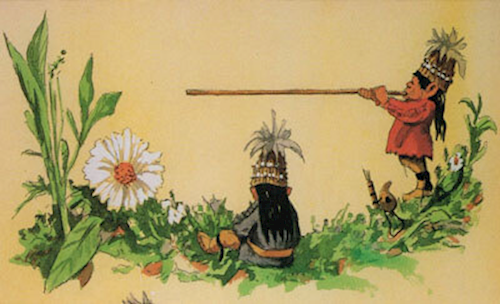
Cherokee Indians in North Carolina refer to fairies as Yunw Tsunsdi, or Cherokee Little People.
Over in Eastern Europe, a number of countries have tales relating to fairies. In Germany, they had evil spirits working in mines that caused havoc. Whenever miners heard the knocking of the kobolds, they knew not to work. One Hungarian author saw the outlines of tiny creatures with a vague resemblence to humans that were ‘black and grotesque’.
I could continue with further fairy folklore, and sightings in places like Cuba, New Zealand, Romania, Argentina, and Canada but will instead move on to descriptions of where the fairies live.
Fairyland of course refers to the residence of fairies, but yet again, there are different versions of where and what it is. Believers point out that there are a variety of spiritual realms; the likes of Tír na nÓg are relatively close to us while others are so rarefied that a human being will never reach them.
In Cornwall, descriptions of Fairyland range from the sublime to the ordinary. In the epic tale ‘The Lost Child,' written by Robert Hunt, a young boy follows enchanting music, meets a beautiful woman and is brought to a fabulous glistening palace. However, another Cornish account suggests Fairyland was nothing more than a regular place visited by goats!
Tír na nÓg is where the Tuatha de Danann lived while in Welsh lore, Fairyland was apparently seen by sailors; they described lush meadows between Pembrokeshire and Carmarthenshire. According to Old Norse mythology, there are Nine Worlds where different enchanted beings such as elves and fairies live.
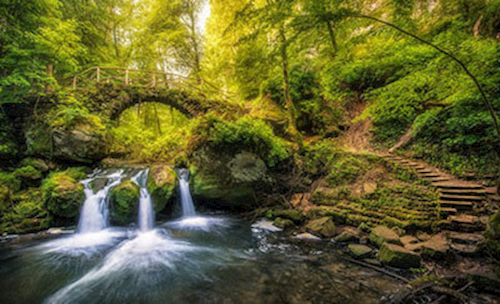
There are many famed Fairylands, prehaps none more famous than Tír na nÓg - Land of the Young.
One interesting theory, espoused by Teresa Mooney in ‘The Fairy Bible’ is that Fairyland consists of four cities, each of which is associated with one of the four elements.
As we alluded to, in the beginning, the impression of fairies as tiny winged creatures (think Tinkerbell) is wide of the mark. In reality, there are a huge variety of fairies, both good and bad. Here is an overview of some of the better-known fairy types.
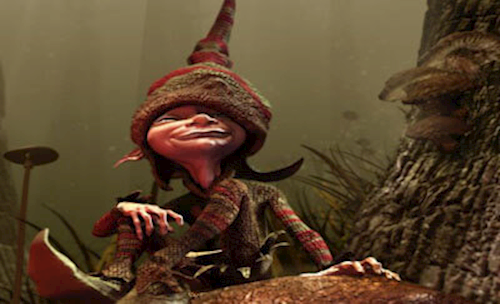
Pixies/Piskies are mischievous creatures capable of doing good or harm to humans.
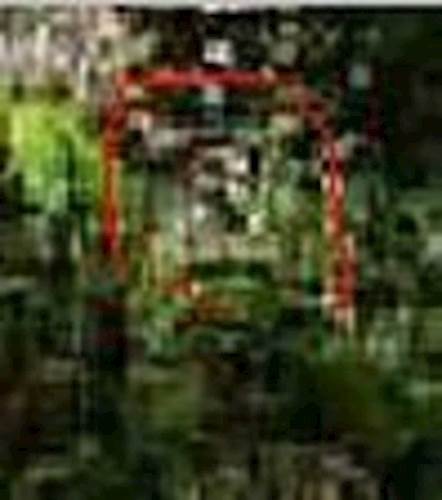
There are innumerable reports of people encountering fairies. The trouble with stories from before the 20th century is that most of them are based on information handed down which is almost certainly inaccurate. Here are a few of the most famous fairy encounters.
Also known as ‘True Thomas,' Rymour apparently met fairies in the 13th century. According to the story, the Queen of Elfland fell in love with Thomas, and he experienced both the good and bad sides of the monarch. He lived with her in the land of the fairies for seven years and was only released when the queen was worried that the devil would take Thomas as part of his seven-year tribute. When Thomas returned home, he had ‘the sight’ and was incapable of lying.
Kirk was a 17th-century Scottish minister who famously wrote The Secret Commonwealth of Elves, Fauns, and Fairies. After he had been found dead beside the Fairy Knowe at Aberfoyle in 1692, locals were convinced that his real body had been abducted by fairies and the corpse left behind did not belong to the minister. Kirk appeared to his cousin and said he was a prisoner in Fairyland.
The cousin was told to throw his dagger over the minister’s ghostly form when Kirk’s son was being christened as it was the only way to free him. Sadly, Kirk’s cousin failed in his mission, and the minister was forever a prisoner. To this day, Kirk’s chair stands in Aberfoyle.
Williams spoke of his encounter with fairies when he was just seven years old in 1757. He was one of four children to spot up to eight couples dancing not 100 yards away. They were smaller than the children but looked like dwarves, and they wore red clothing.
This is arguably the most famous fairy encounter of all time because it caused a sensation in the early 20th century. Between 1917 and 1920, a pair of schoolgirls (Elise Wright and Frances Griffiths) from Yorkshire took five photographs in the woods near the stream by the village of Cottingley which is close to Bradford.
The photographs were even published along with an article by Sir Arthur Conan Doyle in Strand magazine in 1920. Their story was believed by many until some years later when the girls admitted faking four of the five photographs. Interestingly, the girls claim they DID see fairies at Cottingley and were only trying to reproduce what they saw. Moreover, they also claimed one of the photos was genuine.
There are dozens of stories regarding encounters with fairies from the last century alone; and much more from before the 20th century. The trouble with photographic evidence is that people will always make accusations of doctoring. Certainly, the Cottingley incident does not help matters.
Possible evidence of fairies is not limited to sightings. There have been more than a few unusual findings buried in the ground. Skeletal remains of extremely small people have been found all over the world but are usually dismissed as evidence of pygmy tribes.
However, two gold prospectors in Wyoming discovered the remains of a mummified tiny man sat on a ledge. He was probably in his sixties at the time of death and was approximately 20 inches tall. When you bear in mind that Chandra Bahadur Dangi of Nepal is the smallest ever human (to be verified) at 21.4 inches, you have to wonder: Who or what did these men find?
Also, incredibly small skulls have been found in Montana’s Beartooth Mountains. Another mummy, just 11.625 inches tall, was found in Central America in 1920. It is a little more difficult to explain these findings as evidence of pygmy tribes only.
We wish it were possible to give a definitive answer to the question: “Are Fairies Real?” Of course, naysayers will suggest that there is no conclusive evidence to prove the existence of fairies. The main problem with producing such evidence is that when someone does have it, they are immediately ridiculed.
Ultimately, much like the existence of ghosts and other paranormal activity, proving that fairies are real is virtually impossible. However, one could make the argument that proving they are definitely figments of the imagination is just as difficult. To all readers, we ask: Do you believe in fairies? Have you ever encountered any? If so, we would love to hear your stories.
This website is powered by Spruz
Comments